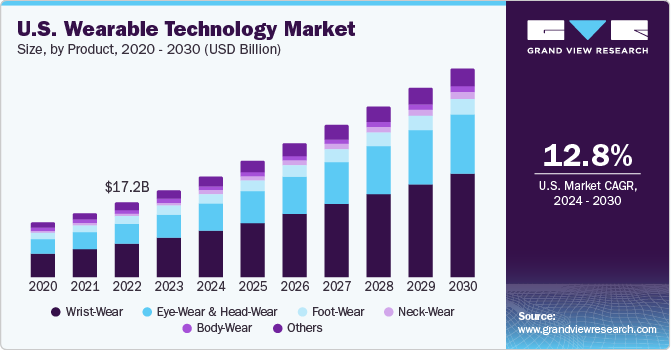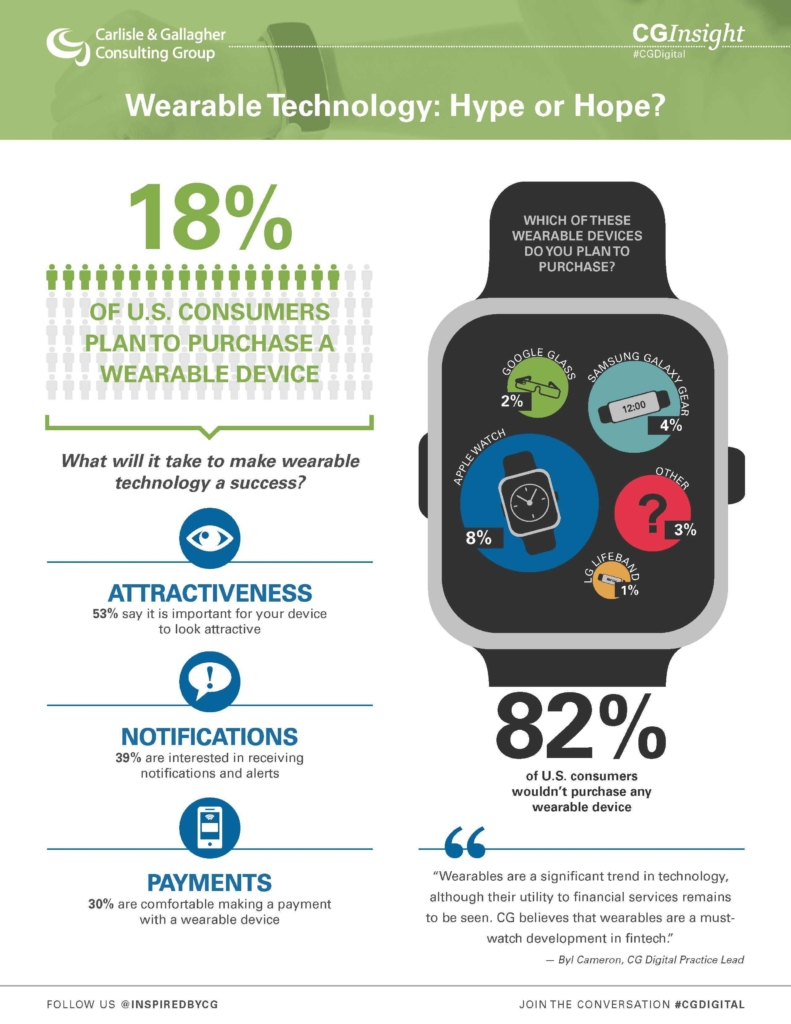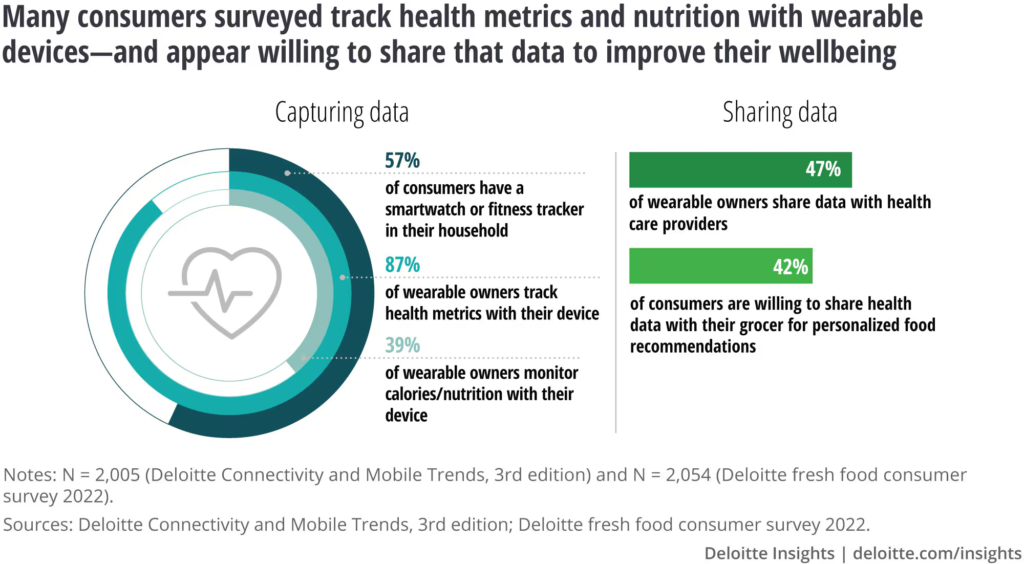
Wearable technology is no longer just a trend—it’s now part of everyday life in the United States. From smartwatches to fitness trackers and even smart glasses, U.S. consumers are embracing wearables to monitor their health, stay connected, and improve their lifestyles.
As this technology becomes more affordable and accessible, millions of Americans are integrating it into their daily routines. But how exactly are people using wearable tech? What are the top reasons behind this shift, and what does the future hold?
Let’s explore how U.S. consumers are using wearable technology and why it’s changing the way people live.

What Is Wearable Technology?
Wearable technology refers to electronic devices worn on the body, often designed to collect data, send notifications, or perform specific tasks. Common examples include:
- Smartwatches (like Apple Watch or Samsung Galaxy Watch)
- Fitness trackers (such as Fitbit, Garmin, or WHOOP)
- Smart rings (like Oura Ring)
- Smart glasses (including Meta Ray-Bans and Google Glass)
- Wearable ECG or heart monitors
- Sleep trackers
These devices are often linked to smartphones or computers and help users monitor various aspects of health, productivity, and communication.
Health and Fitness: The Most Popular Use
The most common reason U.S. consumers use wearable tech is for health and fitness tracking. According to recent surveys, nearly 60% of users say their main reason for using a wearable is to monitor physical activity and health metrics.
Key Health Features People Use:
- Step counting: To monitor daily movement and set goals.
- Heart rate monitoring: For fitness tracking or heart health awareness.
- Sleep tracking: To understand sleep quality and patterns.
- Calorie tracking: To manage weight and diet.
- Blood oxygen levels (SpO2): Useful during workouts and illness.
- ECG and stress levels: Advanced wearables now offer mental health insights.
Fitness lovers use these features to track workouts, measure progress, and stay motivated. Even casual users are benefiting by becoming more aware of their health.

Rise of Preventive Health Monitoring
Wearables are also playing a big role in preventive healthcare. Devices can now detect abnormal heart rhythms, stress patterns, and even early signs of illness.
For example, smartwatches with ECG features can alert users of possible atrial fibrillation (a type of irregular heartbeat), prompting them to consult a doctor. In some cases, this has saved lives.
During the COVID-19 pandemic, many Americans used wearable devices to monitor body temperature and blood oxygen levels, which helped in early detection.
Doctors and healthcare providers are also starting to use wearable data to monitor patients remotely, especially those with chronic conditions like diabetes or heart disease.
Everyday Convenience and Smart Features
Apart from health, wearable devices offer daily convenience.
Smartwatch users enjoy:
- Receiving texts and calls on the go
- Controlling music during workouts or travel
- Using GPS and maps without needing their phone
- Contactless payments through Apple Pay or Google Wallet
- Calendar and reminders for productivity
Many people now rely on wearables to stay connected, especially during work, travel, or workouts. This hands-free technology is a major reason for its growing popularity.
Who Is Using Wearables the Most?
The adoption of wearable tech in the U.S. is widespread, but some groups are more active than others.
1. Young Adults (18–34)
This age group is the biggest user of smartwatches and fitness trackers. They’re tech-savvy, active, and love tracking progress on apps.
2. Working Professionals
Wearables help professionals manage time, stay updated with notifications, and even monitor stress during workdays.
3. Older Adults
Surprisingly, many seniors are now using wearables, especially for health tracking. Companies are creating devices with simple designs, fall detection, and emergency alerts.
4. Fitness Enthusiasts & Athletes
From runners to weightlifters, wearable tech helps them train smarter, recover faster, and stay motivated.
Growing Market and Economic Impact
The wearable technology market is booming. According to industry data, over 100 million wearable devices were shipped in North America in 2024, with the U.S. being the largest market.
Analysts predict that this number will keep growing as technology improves and becomes more affordable.
Top companies in the U.S. wearable market include:
- Apple (Apple Watch)
- Fitbit (now owned by Google)
- Garmin
- Samsung
- Oura
- WHOOP
These companies are competing to offer the best battery life, features, and comfort, which benefits consumers with more choices and better prices.
Privacy and Data Concerns
With all the benefits, there are also concerns—especially around privacy and personal data.
Wearables collect sensitive health information, which raises questions about:
- Who has access to the data?
- How is it being used or sold?
- Are devices secure from hacking or breaches?
Many consumers are now demanding more transparency from tech companies. Some states in the U.S. are even exploring laws to protect wearable device users and ensure companies don’t misuse health data.
Future Trends in Wearable Technology
The wearable tech industry continues to evolve rapidly. Here are a few trends shaping the future:
1. Medical-Grade Devices
Expect more wearables to receive FDA approval for clinical use, especially for heart health, glucose monitoring, and blood pressure.
2. AI Integration
Artificial Intelligence will make wearables smarter, offering personal health insights and automatic advice based on patterns.
3. Longer Battery Life and Better Design
More comfort, slimmer designs, and batteries that last a week or more.
4. Mental Health Features
New wearables are being designed to detect stress, anxiety, and mood swings, helping users care for their mental well-being.
5. Integration with Smart Homes
Future devices may control your home lights, temperature, or security just by gestures or voice.
Conclusion: A Technology That’s Here to Stay
Wearable technology is no longer a gadget for tech lovers—it’s becoming an essential tool for health, communication, and lifestyle improvement.
From busy professionals to retirees, more U.S. consumers are seeing the benefits of tracking their health and staying connected with just a tap on their wrist.
As the technology becomes more intelligent, secure, and affordable, wearables will continue to play a bigger role in how Americans live, work, and care for themselves.
Read More :- How 9 Best Technology Is Transforming American Healthcare






